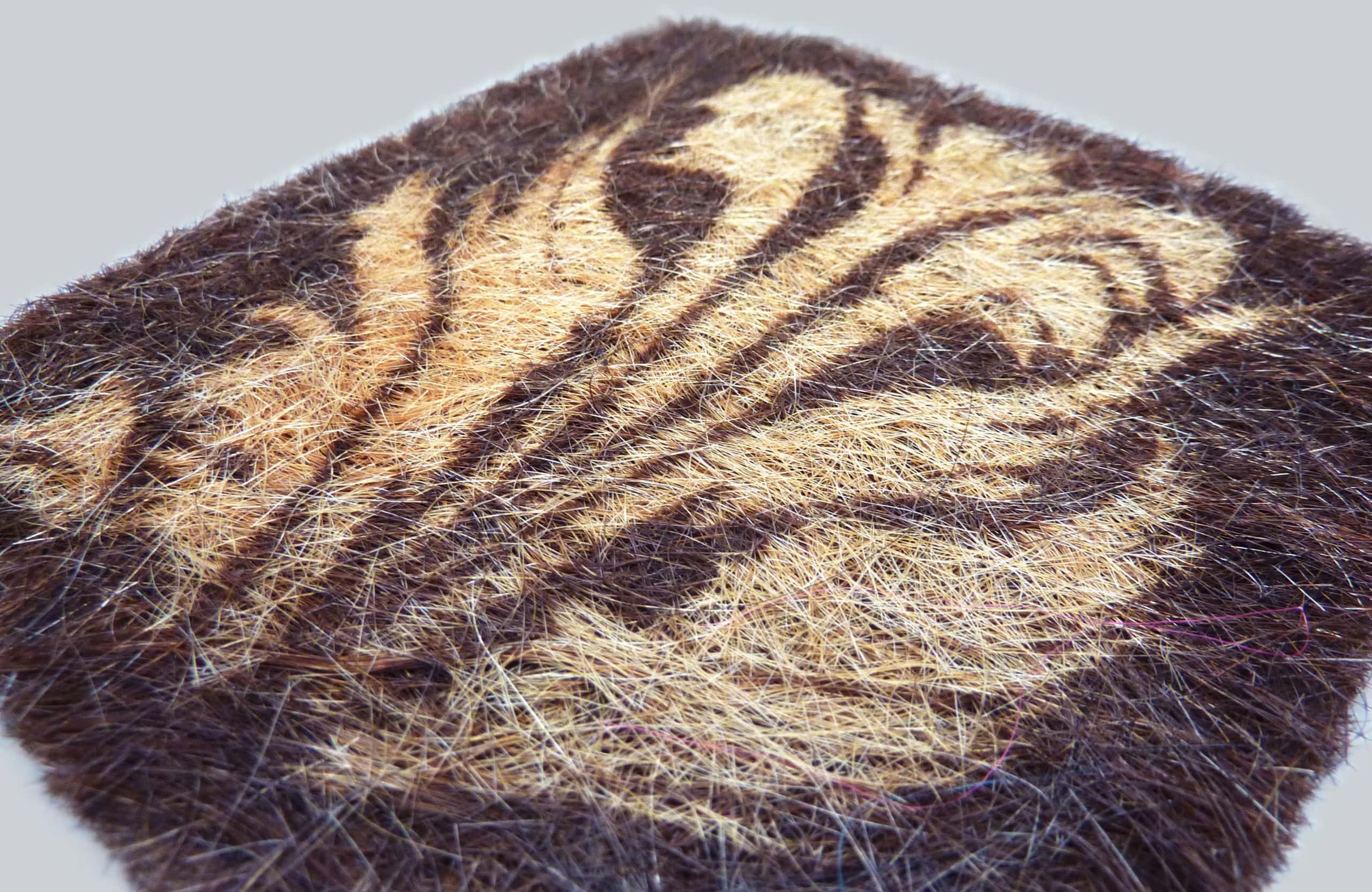Workshop content¶
Art-therapy?¶
What is art-therapy?
According to the CAIRN, art-therapy is "the support of people in need (psychological, physical, social or existencial) through their artistic productions : plastic, sonorous, theatrical, literary, corporal or danced pieces of art. This subtil work, which takes our vulnerabilities as a material, is less for the purpose of unveiling the inconscious significances of the productions and more for allowing the subject to recreate himself, to create again in a symbolistic path, from creation to creation. Art-therapy is then the art of projecting oneself into a piece of art as an enigmatic moving message, and to work on this piece of art to work on oneself. Art-therapy is a deflection to approch our self."
Interview with Nathalie Andry, Lyonnaise art-therapist¶
I am not trained in art-therapy at all, but I thought it could be interesting to have the feedback of an art-therapist to make my workshop safe.
I had the oppportunity and the pleasure to discuss the topic of art-therapy with Nathalie Andry.
Nathalie Andry is an art-therapist who works in the Clinique Lyon Lumière in Meyzieu, near Lyon. She accepted to answer my questions about the organization and management of the participants during the workshops.
Here are some of the questions I asked her, and what she answered me.
Questions to ask:
Q: "I want to address the issue of eco-anxiety throughout my workshop. With this idea, I would like to start the workshop by telling that it comes from my own experience. I thought it could be a way to open a more free exchange, since people can identify and see that it is safe to talk about. Do you think it could be a good idea?"
Nathalie Andry answered me that starting from a personal point of view is okay, but only if we overcame this issue in our experience. Otherwise, it can generate some more anxiety in people's mind, other than sootinh them. Actually, in art-therapy, a mot Since I am still feeling some anxiety due to the current environmental situation, it would be better to introduce the topic of eco-anxiety through a general perspective, having a speech directed towards already existing studies on the subject.
Also, highlighting the fact that it is normal as a citizen and as a human being to feel anxiety when facing such issues. Art-therapy is conveying the idea that everyone has room to express oneself. The individuality is very important.
Q: "I would like to let people write down some words about what they feel, and place them into the pebble. It would be a suggestion, not an obligation. It is linked to the wishing stones legend, saying that if you find a pebble with a specific natural drawing of lines in it, it can come true. Here, the idea is to express feelings and to let them into the cairn. It is like getting rid of a burden through writing. But also, I wanted people to be able to express what they hope for the future. Do you think it could be too touchy, or reactivating some feelings that would be too difficult to handle for a non-trained person? Or do you think that it is too personal?"
Nathalie Andry answered me that working with words is also something that is used in art-therapy. Putting feelings and sensations into words can bring some relief.
: "Also, I will talk about eco-anxiety, and what I want to display in this workshop is the fact that sometimes, being isolated with these feelings of guilt, anger, sadness, is part of the anxiety, because we can feel powerless. But together, we can build something. It is the main idea that I want to convey, added to the idea that sometimes actions are close to us and they can be simple and helping whatsoever. Also, eco-anxiety is the fact of seeing the urgency of change, and it can bring some issues in mind."
Q: "I would like to have some feedback after the workshop, in order to know if people were interested by it, and if is soothed their mind a little. Do you think it would be too difficult to ask such a thing when refering to a deep subject like eco-anxiety?"
Nathalie Andry gave me an idea: since my project is refering to textile, it would be coherent to give people a smaple of materials
Q: "Any way not to rush anyone if they are fragile on this topic?"
Nathalie Andry's answer was about the fact that it is important to frame the workshop's context for the participants, for them to be able to express themselves. I shall explain very clearly that this workshop isn't a therapical one, that it isn't a psychological care workshop.
Organizing the workshop could take the following shape:
- Introducing myself
- Explaining how the workshop works and the purpose of it.
- Let a talk time in the beginning and the ending of the workshop if people want it.
After doing two workshops, I realized that talking about eco-anxiety in an objective and reassuring way was too complicated for me. I have to acknowledge that I am still too vulnerable to be able to deep dive into the subject without playing too much a role of teacher or therapist, and I am neither trained in this process, nor I want to play this part.
I decided to reorient my main subject of the workshop, by lessing the importance of the theorical approach on eco-anxiety, and by enhancing the practice of a handicraft. Afterall, practicing the felting technique and process, and feeling the positive feelings and sensations that it brings in oneself is what I aim with these workshop ; it is the core of it.
By highlighting the practical and concrete concept of up-cycling fibers of the everyday life, my goal is to grab the attention of people who would like to dive into this topic.
---¶
About hair use in textile¶
I discovered Antonin Mongin's work on the Youtube channel ... that I encourage you to take a look at, you can discover much craftmen and cracftwomen there!
Antonin Mongin wants to revive a ancient and traditional craftmanship: the hair art.

About hair use for the environment¶
This caritative organization aims at collecting human hair, pet hairs and fleeces to create felted bioabsorbing mats.
In 2010, an oil spill occured in the Gulf of Mexico, and Matter of Trust sent a call out to collect hair from all over the world. A lot of hairdressers joined the dynamic of it, and it helped reduce the oil spill.

This structure, based in Strasbourg, aims at depolluting the waters to protect the fauna and flora in this area.

This french startup is the first pathway of hair collecting, and the researches they are launching on the reuse of hair is very diverse:
- adding hair to the soil to reduce watering and weeding of it. It also nourrishes the soil.
- making hair mats to absorb oil pollution. Actually, hair can absorb about 8 times its weight of hydrocarbons. It is used to clean the port zones waters, oceans, but also the soil of polluted sites.
- researching the potential benefits of hair in term of skin care, thanks to the keratine it contains.
About dog hairs use in textile¶
Modusintarsia
Anne-Cathrin Schönrock and Franzicka Uhl created the firm Modusintarsia in Germany to produce wool out of dog hair. They stated that about 1000 tons of dog hairs were thrown in the bean ; this waste could be upcycled to become a ressource. This is why they created this firm.
Craftmanship to spin the dog fibers
There are a lot of people who want to use the hair of their dog(s) to create beautiful coil, and to knit it to make garments. Below you can see people posing into their most beautiful pullover in co-creation with their best four-legged friends !

To achieve this result, you can make use of the services of craftmen and craftwomen who spin the fibers to create the coil.
For instance, there are :
- Canislana
- Métiers d'Antan
- DogWool
The site of American Kennel Apparel gives advices to spin yourself your dogs'hairs !
Dog wool : some information¶
Dogs'fur is composed of two different layers: the outer coat, which is long, straight, and harsh, and the undercoat which is soft and dense. It is the undercoat that is the most efficient to generate wool and coils of wool. Not all dogs have the ideal fur for this purpose.
Below you can find a non-exhaustive list of dog species that have a great fur.
Dog species
Here is a non exhaustive list of the dogs whose hairs can easily be used to make wool:
Husky de Sibérie
Leonberg
Tervueren
Akita Inu
Samoyède
Shetland
Colley
Spitz Japonais
Berger Blanc Suisse
Charplaninatz
Eurasier
Chow-Chow
Montagne des Pyrénées
Patous
Lion d’Occitanie
Berger allemand
Bouvier Bernois
Bearded Collie
Malamute
Groenendael
Golden Retriever
Bobtail
Finnois de Laponie
Border Collie
Saint Bernard
Colley
Spitz Loup
Spitz Orange
Lhassa-Apso
Blue Bay Shepherd
Buhund Norvegien
Terre Neuve
Loulou de Poméranie
Dogue du Tibet
Bouvier Bernois
Hovawart
Westies
Sarplaninnac
Chien Loup de Russie
Nizinny
Setter Irlandais
You can admire their cute faces on the DogWool's website